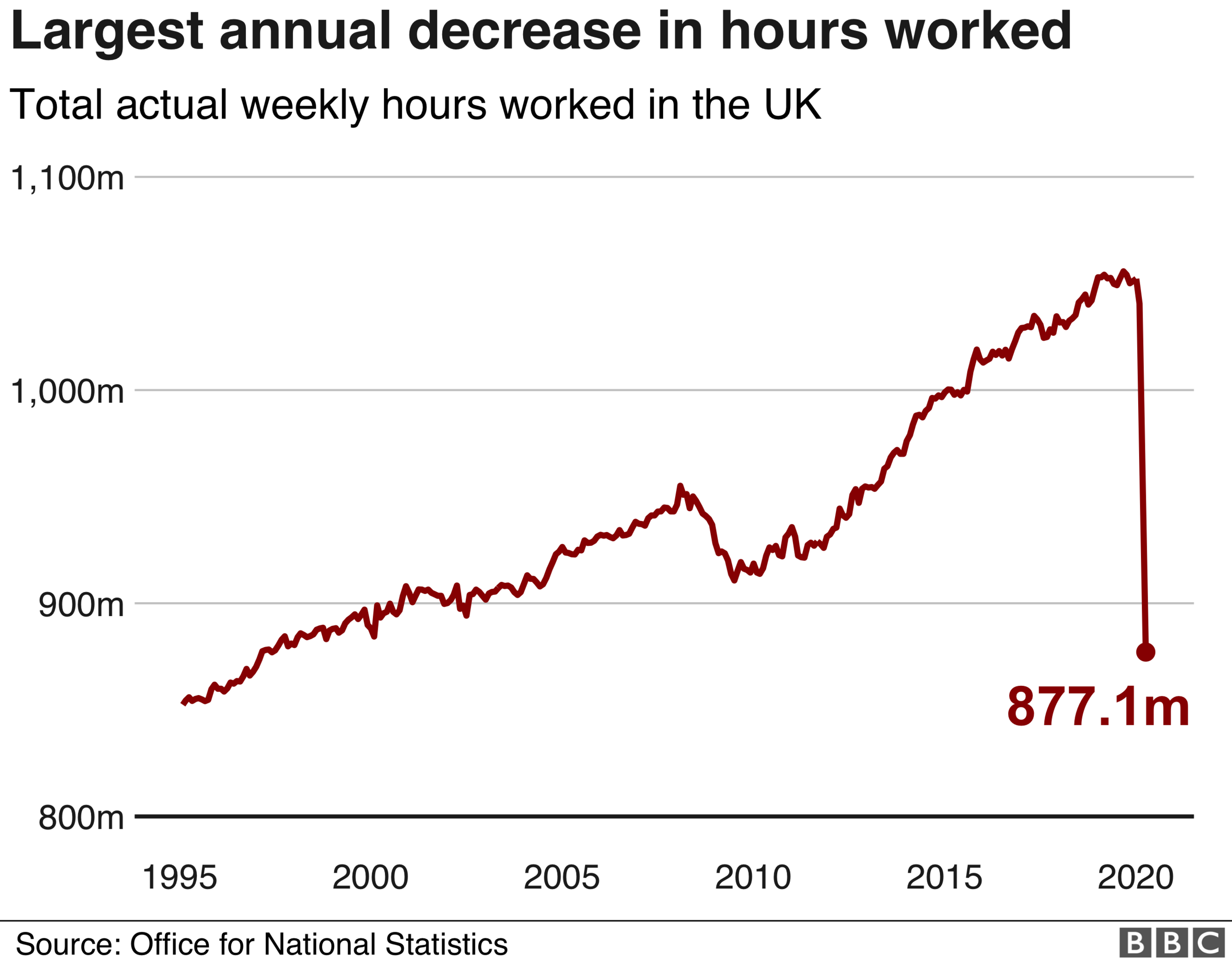Another 15,000 Scots seeking work over lockdown
- Published
- comments

Official figures show unemployment in Scotland rose between March and May as the impact of lockdown was felt
Unemployment in Scotland rose between March and May as the impact of lockdown was felt, official figures indicate, external.
Scotland's unemployment rate rose to 4.3% in the period, a 0.6% increase on the previous quarter. This was higher than the UK unemployment rate of 3.9%.
The number of unemployed Scots was up by 15,000 to 120,000. About 28,000 left jobs but were not looking for new work.
However, the figures were not as high as many feared due to the number of people on furlough.
There are nearly 750,000 workers in Scotland on the UK government's Job Retention Scheme.
Economists say the full effect on employment will not be felt until the scheme ends in October.
Because of the effect of the furlough scheme on the employment market, analysts say the number of hours worked per week is currently a truer reflection of the impact of the coronavirus crisis.
The figures showed a sharp decline of nearly 17% in the number of hours worked in May across the UK. After inflation, average pay was down by 1.3%.

The Scottish government's Economy Secretary Fiona Hyslop said the UK government's Job Retention Scheme will have offered "some relief", and called for the UK government to extend its furlough scheme.
She said: "The Job Retention Scheme will end in October but we believe the UK government must extend the scheme, particularly for sectors that have been most affected by Covid-19, for example travel and tourism and hospitality, given that most of these sectors will not have fully recovered by then."
Ms Hyslop added that the Scottish government had provided a package of support to businesses totalling over £2.3bn.

The UK government's Scottish Secretary Alister Jack said the figures highlighted the impact coronavirus was having on the economy.
He added: "The UK government has provided unprecedented support for people and businesses in Scotland during this pandemic. Almost 900,000 jobs across Scotland are being supported through the UK government's ground-breaking furlough and self-employed schemes.
"People and businesses in Scotland also continue to benefit from UK-wide schemes such as the tourism VAT cut, company loans, VAT deferral, and universal credit."
He said the UK government was committed to getting Scotland's economy back on track, adding: "We urge the devolved administration in Scotland to work with us on that."


The expectation remains of a big surge in unemployment by the end of this year; the figures for March, April and May only give a hint of what is likely to come.
Unemployment was up in Scotland by 15,000, but at 4.3%, the jobless rate remains reassuringly low by most historic standards. Across the UK, the number of those seeking work actually fell, which appears to make little sense.
Perhaps more significant is the number of people who were not in work or looking for work, counted as "economically inactive".
Most of them are students, unpaid carers for family, or those with long-term ill-health. But the number fluctuates on the job prospects for more marginal participants in the labour market.
The total of "economically inactive" in Scotland was up by 36,000. That is likely to include many people who lost jobs, and left the PAYE payroll (HMRC is saying that fell 649,000 across the UK through lockdown), but who saw little point in looking for work while things were so dire and while they weren't supposed to be going out anyway.
The decline in work and income for self-employed people is less clear. You can remain self-employed on these figures, while having little work or income.

The employment figures were not as high as many feared, due to the high numbers of people on furlough
Other indicators point to the picture that is expected by year end: falling pay, just as we've heard from recruiters that starting pay is down sharply; a decline in the number of vacancies, though again, the pick-up in activity may see that rise in some months; and other survey evidence showing employers expecting to shed workers as they begin to bear the cost of furlough from August.
The big story behind these figures is how well furlough has worked in keeping people on payrolls and employment-ready. As it is withdrawn, many will go back to work. Many have already done so.
But others will find - perhaps many others - that there's not enough work and revenue for employers to bring them back.
- Published16 June 2020

- Published16 July 2020
